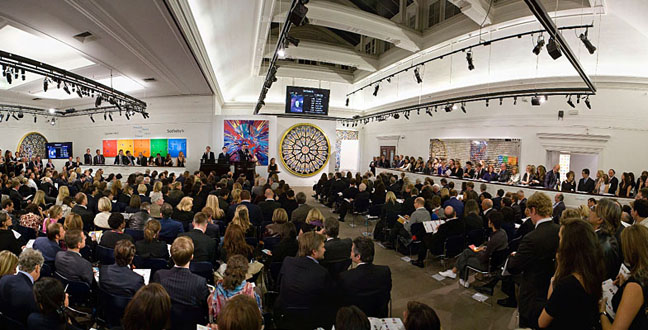Beautiful Inside My Head Forever, Sotheby’s auction of Damien Hirst’s latest work, 223 lots in total, was an extraordinary event. Never before had a living artist dared to dispense with the services of his dealers and send his work straight to auction. Never before had a single batch of one artist’s studio production – created over a period of just two years – been expected to change hands for so much money. The upper estimate for the first 56 lots alone was £62,370,000.
“It takes a bit of courage,” Hirst had said before the sale, “to get to the point where you just cut out the galleries and take a whole load of box-fresh pieces straight to market, no strings, highest bidder wins. Bang!” But the truth is that Hirst himself actually had little to lose. Having already become the richest living artist in all of history, with a personal fortune in the region of a billion dollars, a few tens of millions either way would make precious little difference to him.
But Sotheby’s certainly had a lot at stake. The auctioneers had cleared all twelve of their galleries in New Bond Street to make room for a carnivalesque display of the artist’s trademark works. There were copious quantities of vitrines containing dead animals, alongside enough medicine cabinets to fill a pharmacy and numerous glass cases stocked with sundry arrangements of industrial diamonds, crumpled cigarette butts and plastic anatomical models. The walls were hung with myriad spin and spot paintings, as well as scores of canvases decorated with dead butterflies. This was some statement of confidence in the resilience of the market for Hirst’s work – and, by implication, the contemporary art market as a whole. If the sale were to be a flop, shares in the auction...


